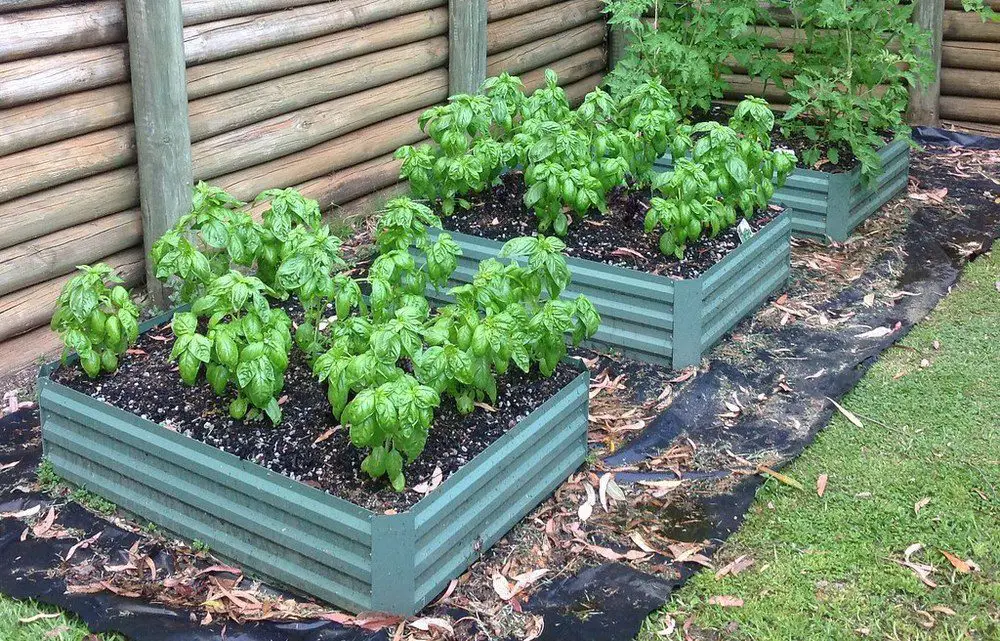Creating a raised garden bed offers many benefits. It can boost plant growth, simplify gardening tasks, and add aesthetic value to your yard. However, choosing the right materials for your raised garden bed is crucial. The material you choose will impact not only durability but also safety and aesthetics.
Contents
- 1 Types of Materials for Raised Garden Bed
- 2 Safety Considerations
- 3 Cost and Budget
- 4 Aesthetic Preferences
- 5 Raised Garden Beds Maintenance Tips
- 6 FAQ for Raised Garden Beds Materials
- 6.1 What’s the Best Material for a Raised Garden Bed?
- 6.2 Can I Use Recycled Materials?
- 6.3 Is Treated Wood Safe for Vegetable Gardens?
- 6.4 Do Plastic Beds Degrade Over Time?
- 6.5 How Do I Maintain a Stone Raised Bed?
- 6.6 Are Metal Beds Safe for Plants?
- 6.7 Do Wattle Beds Attract Pests?
- 6.8 What Should I Consider for Budgeting?
- 6.9 Can I Mix Different Materials?
- 6.10 Is It Hard to DIY a Raised Bed?
- 7 Conclusion
Types of Materials for Raised Garden Bed
Choosing the right material for your raised garden bed sets the foundation for a successful garden. Materials differ in durability, cost, and aesthetics. Here are some popular options to consider.
Wood
Wood is one of the most common materials for raised garden beds. It’s popular because it blends well with most garden settings. This material gives your raised bed that natural rustic aesthetic. The texture and color options make it versatile, fitting various garden styles.
Advantages for Homeowners
One of the main benefits of using wood is its affordability. Many types of wood are reasonably priced, making it accessible for homeowners on a budget. Wood is also easy to work with; even if you’re not a DIY expert, you can likely build a wooden raised garden bed.
It’s also a material that allows for design flexibility. You can paint or stain wood to match your garden’s theme. Moreover, wood provides good insulation for soil, helping to keep roots warm in winter and cool in summer.
Disadvantages
However, wood has some downsides. It’s susceptible to rot and insect damage over time. That natural and rustic look of your wooden raised garden bed will slowly degrade.
Treated Wood
Treated wood is wood that has been treated with chemicals to resist rot and insect damage. It’s a subtype of wood that many people use for outdoor structures, including raised garden beds.
Advantages for Homeowners
Treated wood offers durability, often outlasting untreated wood. For homeowners, this means less frequent replacement and maintenance, saving time and money. You can also find this raised garden bed material in retail stores.
Disadvantages
The major downside of treated wood is the chemical treatment itself. Some treated materials have materials that could be harmful to your plants. If you opt for treated wood, ensure it’s approved for use in raised garden beds and won’t harm your plants or soil. Always check labels and consult experts if you’re unsure.
Concrete Blocks
Concrete blocks, often called cinder blocks, are another option for raised garden beds. These are used as economical building materials for other kinds of structures like walls or sheds.
Advantages for Homeowners
Concrete blocks are incredibly durable, resisting most forms of wear and tear. It makes them ideal for homeowners who want a long-lasting structure. They are also heavy, providing stability against strong winds and weather conditions. Another benefit is their modular nature, allowing for design flexibility. You can stack them in different configurations to create a bed that suits your needs.
Disadvantages
Concrete blocks can be expensive and are often more difficult to transport and install due to their weight. The material in concrete can also raise the soil’s pH. If you have plants that prefer acidic soil, this could be a problem. Additionally, concrete blocks can get hot in direct sunlight, potentially affecting the soil temperature.

Metal
Metal, specifically galvanized steel, is becoming more popular for raised garden beds. It offers a sleek, modern appearance that differentiates it from other materials. These garden beds have an open bottom for improved drainage and is easy to install.
Advantages for Homeowners
One of the biggest benefits of metal is its durability. Galvanized steel, in particular, is rust-resistant, giving it a long lifespan. It’s also relatively lightweight compared to concrete blocks, making installation easier. Metal beds heat up and cool down quickly, which can be an advantage for extending the growing season in cooler climates.
Disadvantages
Metal also has its downsides. It can be more expensive upfront than wood or plastic. Also, the heat-conducting nature of metal means it can get too hot for some plants in extremely sunny and warm conditions. Metal edges can be sharp, posing a risk of injury during installation or gardening activities. And while its modern look is a plus for some, it may not suit every garden’s aesthetic.
Plastic
Plastic is another material you might consider for your raised garden bed. It’s known for being lightweight and easy to assemble.
Advantages for Homeowners
The biggest draw for using plastic is its ease of installation. Most plastic raised garden beds come in kits you can easily snap together. It’s a quick and simple solution, especially for those uncomfortable with DIY projects. Plastic is also affordable and available in various colors and styles to match your garden’s look. Additionally, plastic won’t rot or rust, making it a durable option for certain climates.
Disadvantages
Plastic does have its downsides. It’s not as durable as materials like concrete or metal. Over time, exposure to sunlight can make the plastic brittle, causing it to crack. Because it’s lightweight, plastic beds may also be less stable in strong winds. Some people also have concerns about plastic leaching chemicals into the soil, although many modern plastics are food-safe.
Stone
Stone is a classic material that adds a timeless look to any garden. Both natural and engineered stones are available for use in raised garden beds.
Advantages for Homeowners
Stone offers unmatched durability and a high-end look that can increase your property’s aesthetic and monetary value. It’s a long-lasting material that will stand up to most weather conditions. Because stone is so heavy, it provides a stable structure that won’t easily topple over. Stone also offers good insulation for the soil, helping to keep it warm in colder seasons.

Disadvantages
The drawbacks of using stone include its high cost and the labor-intensive installation process. Stone beds are permanent and can’t be easily moved or resized, so you need to be certain of your design before you start. Stone can also retain heat, which might not be ideal for plants that prefer cooler soil conditions.
Wattle
Wattle is a less common but unique material for raised garden beds. It’s made by weaving wooden sticks or branches between upright posts.
Advantages for Homeowners
Wattle beds offer a rustic and natural look that’s hard to achieve with other materials. They’re also inexpensive if you have access to free branches or twigs. Wattle can be a good choice for temporary or seasonal beds, as it’s relatively easy to assemble and disassemble. The open weave allows for good drainage and aeration of the soil.
Disadvantages
The main downside of wattle is its lack of durability. It’s prone to rot and decay, so it won’t last as long as other materials. Insects like termites may also be attracted to the wood. Additionally, wattle beds may not be sturdy enough to hold large amounts of soil without additional support.
Recycled Materials
Using recycled materials like old tires, pallets, or reclaimed wood can be both eco-friendly and cost-effective.
Advantages for Homeowners
The biggest advantage is the low cost, especially if you’re using materials you already have. Recycled materials can also add a unique and creative touch to your garden. For environmentally conscious homeowners, using recycled materials reduces waste and the demand for new resources.
Disadvantages
The main issue with recycled materials is that they can be unpredictable in terms of durability and safety. Old tires, for instance, could leach harmful chemicals into the soil. Pallets might be treated with chemicals or could be contaminated with bacteria. It’s essential to know the history of the material you’re using and whether it’s safe for gardening. Always do your research and, when in doubt, consult experts.
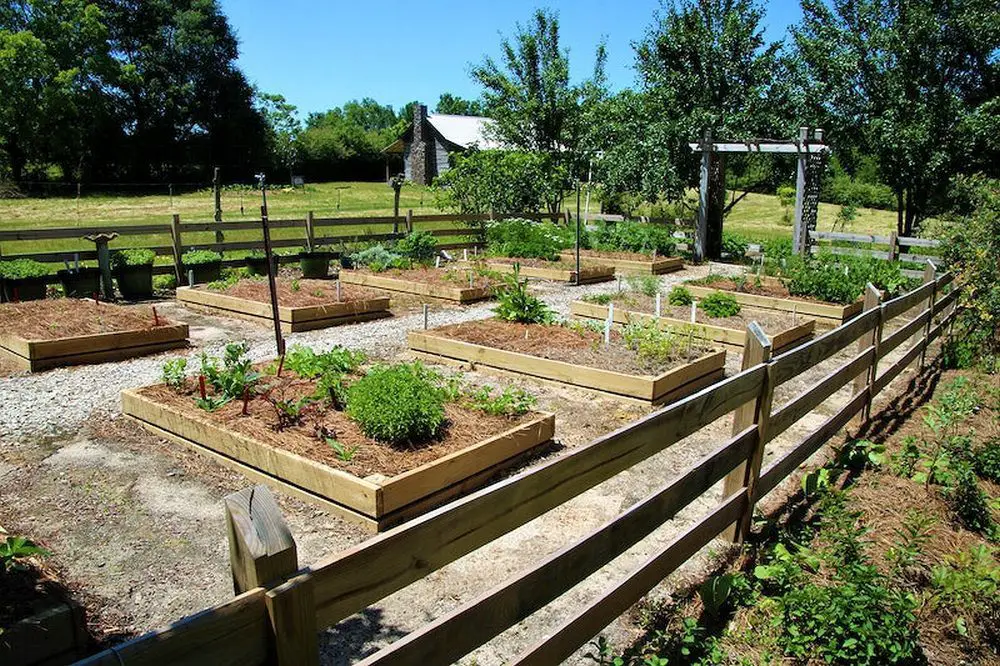
Safety Considerations
When building a raised garden bed, safety should be one of your top priorities. The materials you choose will directly impact the well-being of your plants, soil, and even your health. Below, we explore key safety aspects to consider when selecting materials for your raised garden bed.
Chemical Leaching
Some materials have been treated with chemicals that can seep into the soil over time. Treated wood is a prime example. While these treatments can prolong the life of the wood, they may contain harmful substances. Always check labels or certifications to ensure the material is safe for gardening. If unsure, consult experts or opt for materials safe for growing food.
Material Strength and Stability
A raised garden bed must be strong and stable to hold soil, plants, and sometimes even large amounts of water. Materials like thin plastic or poorly constructed wattle can collapse under the weight. A sudden collapse could harm your plants and create a messy and time-consuming cleanup. It might also pose a physical risk if you or a family member are near the bed when it collapses.
Sharp Edges and Protrusions
Some materials come with their own set of safety hazards in the form of sharp edges or protrusions. Metal and stone, for instance, may have edges that can cause injury during installation or while tending to your garden. Always handle such materials carefully, and consider sanding down sharp edges or using edge protectors for added safety.
Toxicity to Plants and Humans
Certain materials can be toxic to both plants and humans. For example, some plastics may contain harmful chemicals like BPA. These could potentially leach into the soil and get absorbed by your plants. Be cautious and opt for food-grade or garden-safe plastics. When using recycled materials, know their history and whether they’ve been exposed to substances that could harm your garden or health.
Environmental Impact
While not a direct safety concern, the environmental impact of your material choice is also worth considering. Some materials are more eco-friendly than others. Using recycled or sustainably sourced materials can lessen your garden’s environmental footprint. However, make sure these materials meet all other safety criteria discussed above.
Choosing the right materials for your raised garden bed is a critical step that impacts more than just the look of your garden. Prioritize safety along with other factors like durability, cost, and aesthetics. By doing so, you ensure a healthier and more fruitful gardening experience.
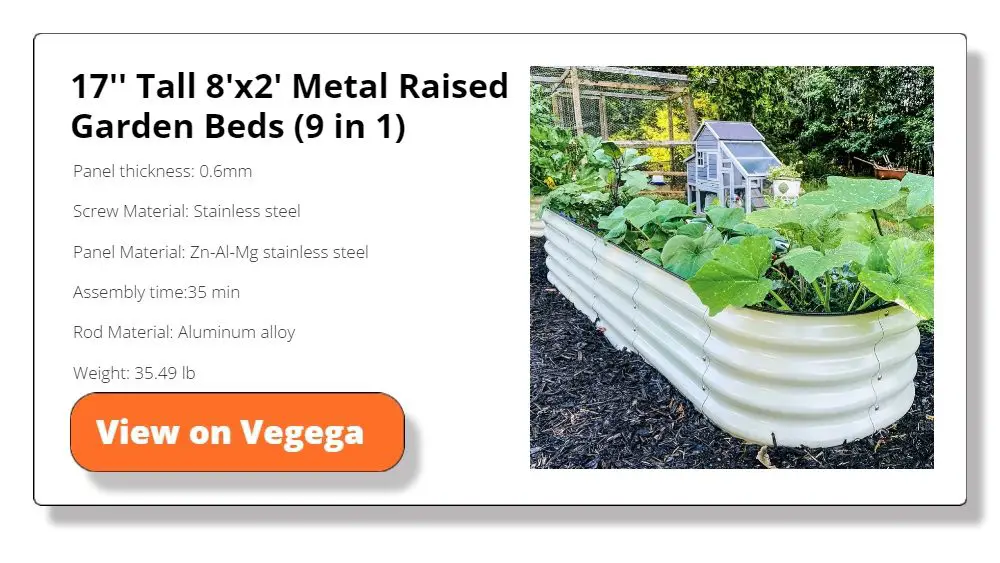
Cost and Budget
Building a raised garden bed is an investment in your outdoor space. While you want a bed that’s durable and aesthetically pleasing, you also need to consider your budget. Below are key financial aspects to consider when selecting materials for your raised garden bed.
Material Costs
Different materials come with different price tags. Woods like cedar and redwood are generally more expensive than other types of wood but offer better durability. Concrete blocks and stones are sturdy but can also be costly. Conversely, materials like plastic and wattle are usually more affordable. Consider the initial cost of the material and how it fits into your overall budget.
Installation Expenses
Don’t forget to account for the cost of installing your raised garden bed. Some materials require specialized tools or professional help for installation, adding to the overall expense. For example, stone and concrete blocks are heavy and may need machinery or extra labor to put in place. On the other hand, materials like plastic and wattle are easier to handle and can often be set up without extra help.
Long-Term Maintenance
While a cheaper material might seem like a good deal upfront, consider its long-term maintenance costs. For example, wood planks susceptible to rot or insects will need to be replaced more often than more durable materials like concrete or metal. Factor in the cost of potential repairs or replacements when calculating your budget.
Customization and Accessories
You might also want to add features like built-in benches, trellises, or irrigation systems to your raised garden bed. These extras can increase your total expenditure. Consider these additional costs early on so you’re not surprised later.
The cost of building a raised garden bed isn’t just the price of the material; it’s a combination of initial costs, installation expenses, and long-term maintenance. By carefully planning and budgeting, you can select a material that meets both your financial constraints and your gardening needs.
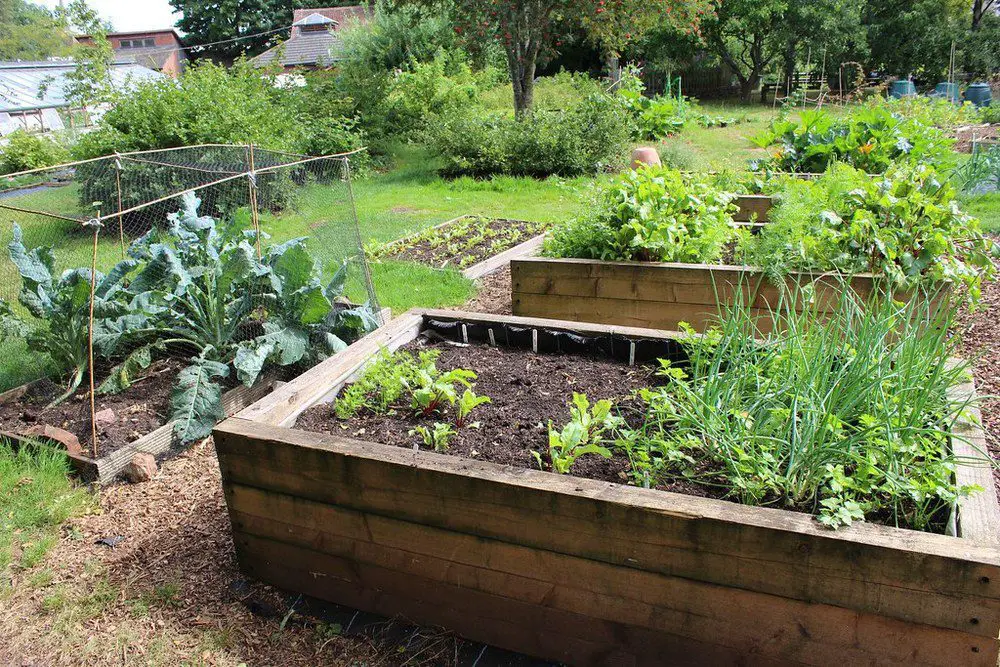
Aesthetic Preferences
The visual appeal of your raised garden bed matters. After all, your garden is an extension of your living space. It should reflect your style and complement your home’s exterior. Here are some key points to consider when thinking about the aesthetics of your raised garden bed.
Matching Your Home’s Style
The material you choose should harmonize with the overall look and feel of your home and garden. For example, if you have a modern home, sleek materials like metal or concrete may fit well. On the other hand, a rustic or cottage-style home might benefit from a wooden or wattle bed.
Texture and Color
Different materials offer different textures and colors. Wood provides a natural, warm feel, while stone adds a classic touch. Concrete blocks can be either rugged or smooth, depending on how they’re made. Consider how the texture and color of the material will work with your plants, soil, and other garden elements.
Shape and Design Flexibility
Some materials are more flexible than others when it comes to design options. Wood and metal are generally easier to cut and shape, allowing for more customized designs. Concrete blocks and stone are more modular but can offer design flexibility.
Visual Impact
The material you choose will have a significant visual impact on your garden. Think about how it will look throughout the seasons. Some materials, like wood, may age or weather over time, creating a different look that you might find appealing.
Your raised garden bed is more than a functional space for growing plants. It’s a visual feature that can enhance the beauty of your outdoor area. Choose a material that not only meets your practical needs but also aligns with your aesthetic preferences. This way, you’ll create a garden that you’ll enjoy for years to come.
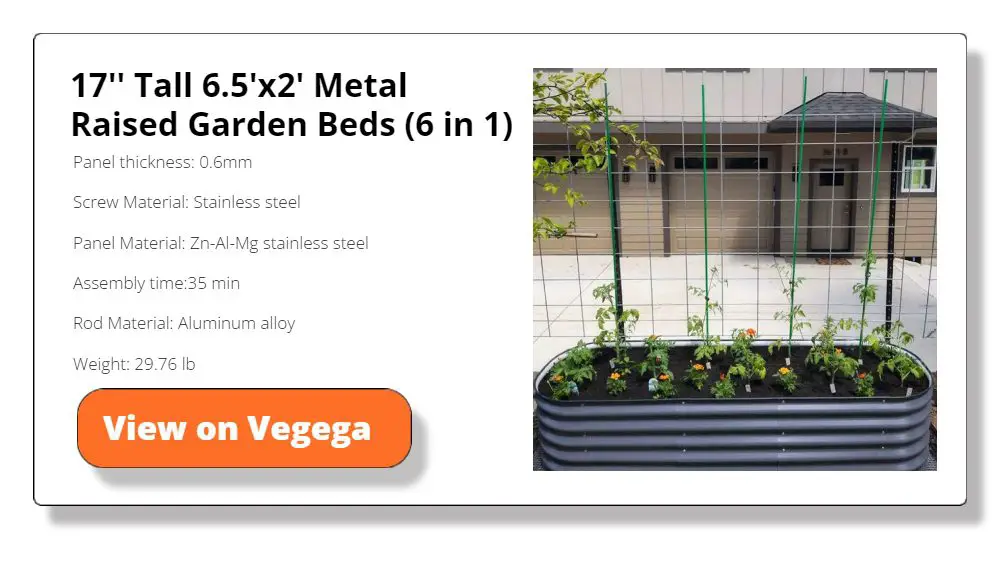
Raised Garden Beds Maintenance Tips
Taking care of your raised garden bed is crucial for its longevity and the health of your plants. Here are some maintenance tips to help you get the most out of your garden bed.
Check for Wear and Tear
Regularly inspect your raised garden bed for signs of damage. Look for cracks, rot, or rust, depending on the material you’ve used. Catching these issues early can prevent more significant problems later on.
Soil Health
The soil in your raised bed needs periodic attention. Test your soil to ensure it has the right pH and nutrient levels. You may need to add fertilizers or amend the soil to keep your plants healthy.
Pest Control
Raised garden beds can be susceptible to pests like snails, slugs, and certain insects. Regularly check for pests and treat them as needed. Using natural pesticides can keep your plants healthy without adding harmful chemicals to the soil.
Seasonal Care
Different materials react differently to changes in weather. Wood may need to be resealed to protect it from moisture, while metal might require rust treatment. Adjust your maintenance routine according to the seasons to keep your raised garden bed in good shape.
Good maintenance practices will ensure that your raised garden bed remains a healthy and productive plant space. From checking for wear and tear to seasonal care, each action you take will extend the life of your bed and contribute to a thriving garden.
FAQ for Raised Garden Beds Materials
What’s the Best Material for a Raised Garden Bed?
Can I Use Recycled Materials?
Is Treated Wood Safe for Vegetable Gardens?
Do Plastic Beds Degrade Over Time?
How Do I Maintain a Stone Raised Bed?
Are Metal Beds Safe for Plants?
Do Wattle Beds Attract Pests?
What Should I Consider for Budgeting?
Can I Mix Different Materials?
Is It Hard to DIY a Raised Bed?
Conclusion
The materials for your raised garden bed impact the plants you are growing. It also determines the look of your garden and the safety of the residents. Whether you opt for natural wood, sturdy stone, or any other material, understanding the benefits and drawbacks is essential.
Consider factors like durability, cost, maintenance, and environmental impact. With the right care and attention, your raised garden bed can become a thriving, beautiful centerpiece in your garden for years to come.

